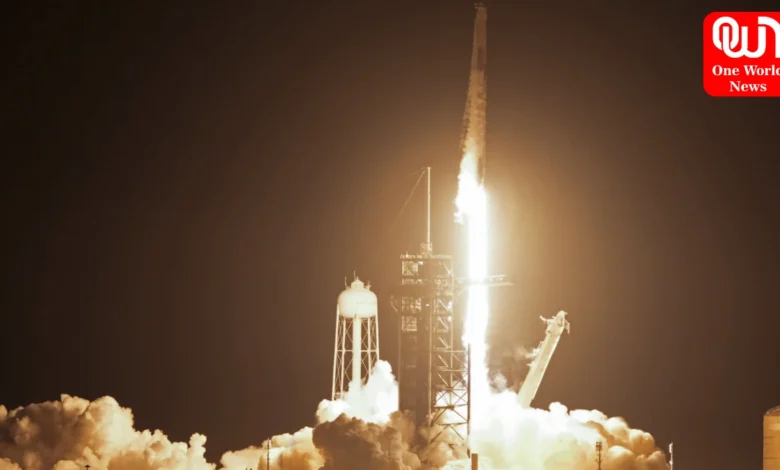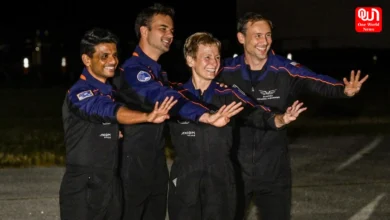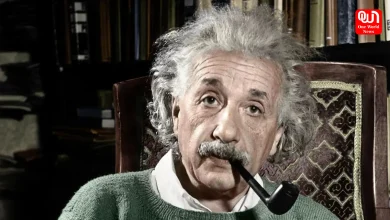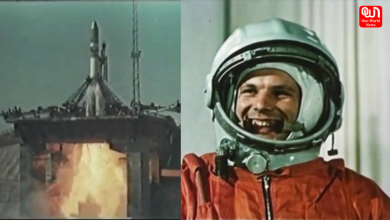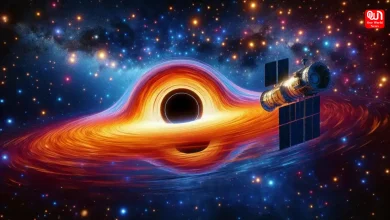SpaceX, NASA successfully launched a manned Crew-8 mission to the International Space Station
SpaceX and NASA achieve milestone with Crew-8 mission to ISS, fostering international collaboration for scientific exploration in microgravity
Advancing Science in Orbit: SpaceX, NASA Celebrate Successful Launch of Manned Crew-8 Mission to International Space Station
In a historic moment, a SpaceX Falcon 9 rocket, carrying a crew of three US astronauts and a Russian cosmonaut, successfully lifted off from NASA’s Kennedy Space Center in Florida on Sunday night. The mission, known as Crew-8, marks another significant collaboration between SpaceX and NASA, aiming to advance scientific research during a six-month mission aboard the International Space Station (ISS).
A Seamless Liftoff: The Journey Begins
At precisely 10:53 p.m. EST, the two-stage Falcon 9 rocket, topped with the autonomously operated Crew Dragon capsule named Endeavor, soared into the night sky. The live NASA-SpaceX webcast captured the awe-inspiring moment as the rocket ascended, with nine Merlin engines roaring to life, creating billowing clouds of vapour and a reddish fireball illuminating the Atlantic coast.

Crew 8’s Destination: The International Space Station
The four-member crew, consisting of mission commander Matthew Dominick, veteran astronaut Michael Barratt, NASA astronaut Jeanette Epps, and Russian cosmonaut Alexander Grebenkin, is scheduled to reach the ISS early on Tuesday after a 16-hour flight. Docking with the orbital laboratory, situated approximately 250 miles above Earth, initiates their journey into the realm of microgravity and scientific exploration.
Crew 8: Diverse Expertise for a Collective Mission
Led by mission commander Matthew Dominick, a U.S. Navy test pilot on his inaugural space voyage, and veteran NASA astronaut Michael Barratt, serving as mission pilot, Crew 8 brings a wealth of expertise to the ISS. Aerospace engineer Jeanette Epps and cosmonaut Alexander Grebenkin, both spaceflight rookies, complete the diverse team, ready to contribute to the mission’s success.
International Collaboration in the Skies: A Diplomatic Feat
Alexander Grebenkin’s presence as the latest cosmonaut on a US spacecraft, despite geopolitical tensions between the United States and Russia, showcases the commitment to international collaboration in space exploration. This ride-sharing agreement, established in 2022 between NASA and the Russian space agency Roscosmos, demonstrates the ability to bridge diplomatic challenges for the greater cause of advancing space exploration.
Welcoming Crew 8 Aboard A Reunion in Orbit
Upon reaching the ISS, Crew 8 will be welcomed by the seven current occupants, including three Russians and the astronauts from Crew 7, representing NASA, Japan, and Denmark. The seamless handover is a testament to the meticulous planning and coordination required to ensure continuous human presence aboard the ISS.
Read more: Unveiling the Laughter Riot: Narendra Khatri’s Stellar Performance as Chutney Man in Laapata Ladies
Extended Stay and Packed Schedule: The Scientific Endeavor Begins
Crew 8 is expected to remain aboard the ISS until the end of August, embarking on a mission that involves conducting approximately 250 experiments in the unique microgravity environment of the orbital platform. These experiments, spanning various scientific disciplines, aim to contribute valuable insights that can only be gained in the distinctive conditions of space.
The ISS: A Symbol of International Cooperation
The ISS, spanning the length of a football field, stands as the largest human-made object in space. Conceived 25 years ago as a multinational venture to strengthen relations between the United States and Russia, it has evolved into a symbol of international cooperation, encompassing contributions from Canada, Japan, and 11 European countries.
We’re now on WhatsApp. Click to join.
Conclusion: A Bright Future for Space Exploration
As Crew 8 settles into their mission aboard the ISS, the successful launch and docking represent not only a triumph in technological achievement but also a testament to the enduring spirit of collaboration in space exploration. With NASA’s commitment to keep the ISS operational for at least six more years, the future holds the promise of continued scientific discoveries and advancements that benefit humanity as a whole. The Crew-8 mission stands as a beacon of hope, showcasing the potential of united efforts in reaching new frontiers beyond our planet.
Like this post?
Register at One World News to never miss out on videos, celeb interviews, and best reads.

